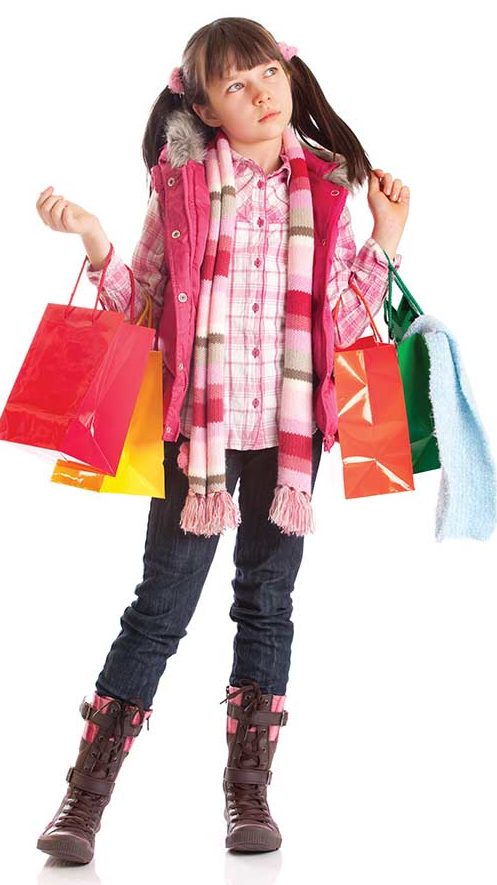By Dr Brooklyn Storme
A simple way that you can foster great social and emotional wellbeing in your child from now right up to adulthood.

At the practice, I am consulted by many parents for assistance and guidance on how to cope with their child’s behaviour. Recently, a couple came to see me for just this reason. Their nine-year-old child was demanding on their time, attention and resources and developed behaviours that were very much unwanted by the family and by the primary school. These behaviours included tantrums, back-chatting, door slamming and fairly frequent exclamations of ‘I’m running away’. Needless to say, poor mum and dad were at a loss. They themselves presented as anxious, depressed, exhausted and desperate for help.
Working with the family over time, it was revealed that *Mikayla’s behaviour commenced in response to her not getting her own way. In the beginning, she’d ask for something and being such loving parents who didn’t want their child to go without and who wanted to give their child ‘everything’, what soon developed was an expectation in Mikayla that she could have everything. It became very hard for her to hear the word ‘no’.
As parents, it’s very natural to want to be, do and give the best of everything to children. And for this reason, it can also be very helpful to teach children about gratitude and I’ll explain why.
Because of their age and developmental stage, most children are ego-centric. That’s not a bad thing; it simply means that they see things from their own perspective. It’s their wants, their needs, on their terms and often; immediate gratification is the preference! By teaching children about gratitude, they learn how to think beyond this bubble and learn to look at the world around them. They learn how to develop very important soft skills like empathy and understanding.
Studies show that when children are taught and practice gratitude, they develop levels of happiness and optimism when they grow up that are higher than their adult counterparts who didn’t have this exposure. I love hearing that. Second, when children who practice gratitude become adults, they also are found to report less symptoms of depression and sadness than their counterparts. Gratitude can help to foster resilience in children also and act as a buffer for stress.
There are some simple ways that parents can introduce gratitude into their child’s world and one of the easiest is by incorporating it into the daily routine. When talking with your child, saying things “Oh wow! You did a great job!”, “Look at the colour changing on the fruit on our trees”, “I love it when you tell me stories”, “Aren’t we lucky that Dad is such a great cook?!” can begin to shape thinking in children. It’s also really great to acknowledge your child when you hear them expressing gratitude to you and to each other.
There are many activities that can enhance thankfulness through being community minded. For example, when it’s time to update their wardrobe, asking your child to help you sort out clothes including a pile to donate, can be truly educational. If you wanted to take this further, you could encourage your child to come along with you to the donation point and drop the items off. This provides an opportunity for the child to see the process from end-to-end.
And yes, while it might be tempting to take over a household job that has been allocated to a child because you’re watching them doing it incorrectly, do try and resist. It’s better sometimes to stay on the sidelines and be the coach, offer gentle advice on different ways to complete the chore. By you staying back, your child will learn about effort and energy that goes into things like making a bed, stacking or unpacking a dishwasher or setting a table and this in turn helps them to build intrinsic awareness of the effort of others and fosters a sense of gratitude for when people perform this task for them in the future.
One activity that I like to do with the children at the practice, is called the Thankfulness Game. We each take it in turns to say out loud for one minute all of the things we are thankful for. Kids love it (especially when they see the timer counting down on the iPad!). At the start, they might be unsure of what to be grateful for so it’s helpful to begin with simple things like “I’m thankful for my sister, I’m thankful for my snack, I’m thankful for my teacher, I’m thankful for my dog, Spot”. I was doing this activity recently with a little girl, 7-year-old and she was absolutely loving it but ran out of things to say and could see she still had time on the clock. Out of sheer desperation, she looked at me and blurted, “I’m thankful I don’t wear glasses, no offence Bee”. I still giggle to myself when I think of this.
Teaching children about gratitude is a very special and very useful exercise and has loads of benefits not just now, but through to adulthood. It’s easy to do and can be lots of fun, so just find a rhythm that works best for you, your child and your family and go with that.
If you need more help, you can always ask your GP for a referral to a Psychologist and they’ll be more than happy to support you.
Dr. Brooklyn Storme, PhD is the Director and head psychologist at All Psyched Up, a mindfulness-based allied health practice on the Mornington Peninsula. When she’s not at work, she’s usually teaching Gabe new tricks or spiking up his purple Mohawk.
Facebook: allpsychedup
Ph: 03 8797 5542

